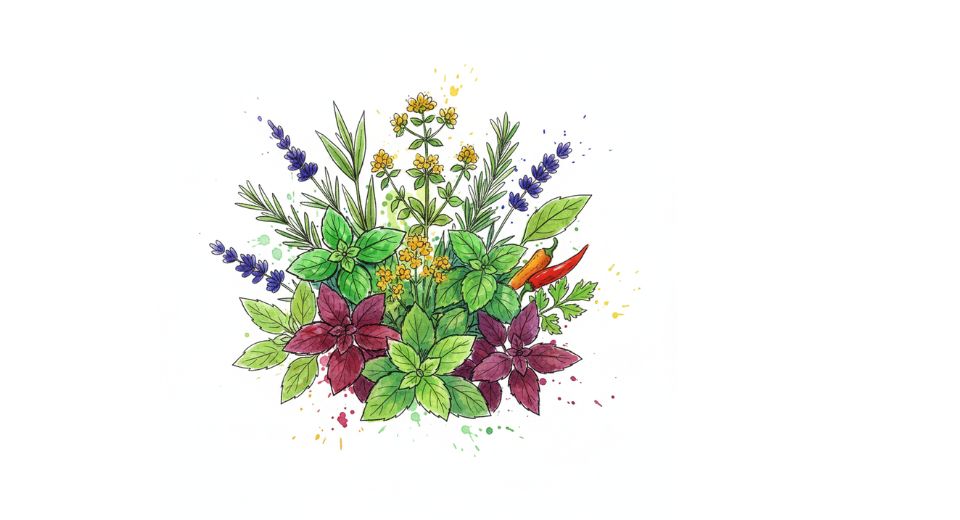
Sep 26, 2025

Metastat Insight, a trusted market intelligence provider, has published a comprehensive report entitled global herbs market. The document provides an insightful overview of the role of herbs in shaping food, pharmaceutical, and wellness markets in global markets. The report offers an enlightened glimpse into production processes, supply chains, and application diversities that render herbs an important segment of contemporary trade and consumption paradigms.
The research follows the course of herbs from production farms to final consumer products, demonstrating how cultivation practices, processing methods, and supply networks provide regular supply for export and domestic markets. The impact of cultivation regions and cycles on availability is specifically addressed to provide a comprehensive understanding of the underlying framework sustaining this category.
The world herbs market is introduced as a dynamic confluence of agriculture, processing, and product creativity, where quality control and traceability are of utmost significance. Metastat Insight delves into the different product categories under herbs, such as fresh, dried, and processed forms. Each type has various end uses ranging from culinary use to medicinal dosages and personal care items.
The report emphasizes how preservation techniques, drying technology, and controlled storage facilities ensure strength and flavor, as well as increase shelf life. This focus on post-harvest management emphasizes how herbs retain value throughout different phases of the supply chain.
An important part of the report examines the contribution of herbs to pharmaceutical and nutraceutical research. Herbal extracts, essential oils, and bioactive compounds are being used more in supplements, topical products, and therapeutic treatments. The international herbs market is highlighted as a source of bioactive agents used in supporting research, product innovation, and commercial development in various health-related businesses.
Regional mapping gives an insight into cultivation patterns and trade flows. Some regions have a focus on bulk production of particular herbs, whereas others have a reputation for high quality or specialty varieties that command higher prices from global buyers. Trade routes, export controls, and quality certification processes are discussed to illustrate how global demand is fulfilled through planned agriculture and logistics planning.
The report also touches on the culinary importance of herbs and how they can drive food culture globally. From classic blends to contemporary ready-to-use mixtures, herbs are at the forefront of flavor profiles and consumer experiences. The report looks into how packaging, labeling, and product placement generate value for herb-based products within retail settings and foodservice channels.
Metastat Insight calls out the role of processing plants and certification criteria in upholding product safety and integrity. Good agricultural practice, residue testing, and organic certification are all components of a larger context of compliance that allows producers access to the premium markets. Not only do these actions help safeguard end-consumer trust, but they also boost the reputation of suppliers in aggressive global markets.
The competitive environment is given close scrutiny, with profiles of top producers, processors, and exporters. Their capacity, procurement strategy, research plans, and alignment with farmer groups are discussed in the report. This section indicates how grower-enterprise partnerships guarantee stable quality and long-term supply security.
Distribution patterns are examined, from orthodox wholesale to direct-to-retail and e-commerce channels. Coverage here demonstrates the ways herbs get to diverse consumer bases, from mass food manufacturers to small specialty stores. The worldwide herbs market is framed as a network where logistics effectiveness and market responsiveness are critical to success.
Focus is placed on product development innovation. Flavored herb mixtures, functional infusions, and ready-to-use pastes are highlighted as examples of manufacturers' innovation to develop differentiated products for changing consumer choices. These innovations are not merely presented as extensions to products but as value-added solutions, which add convenience and promote usage in various occasions.
The report also explores sustainability efforts in the production and processing of herbs. Water-saving farming methods, environmentally friendly packaging materials, and measures to reduce waste are added as markers of responsible expansion on the part of the industry. By incorporating these facts, Metastat Insight gives stakeholders a comprehensive picture of how environmental responsibility is being integrated into this market sector.
Overall, the international herbs market, as represented in Metastat Insight, presents itself as a strategically significant industry linking agriculture, health, and food innovation.
The study presents an in-depth perspective of supply structures, processing practices, and distribution systems that support international demand. By providing granular insights into local trends, competitive strategies, and product development efforts, Metastat Insight provides market participants with the intelligence they need to effectively participate in a market that continues to grow in terms of scope and relevance across industries.
Drop us an email at:
Call us on:
+1 5186502376
+91 73850 57479